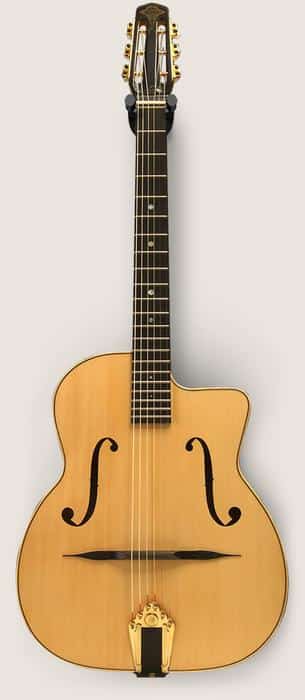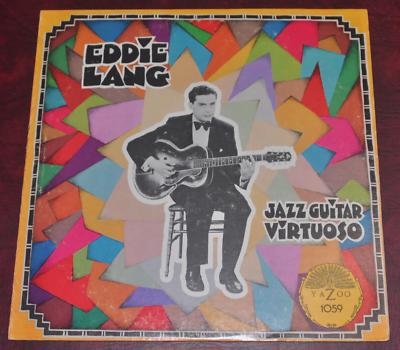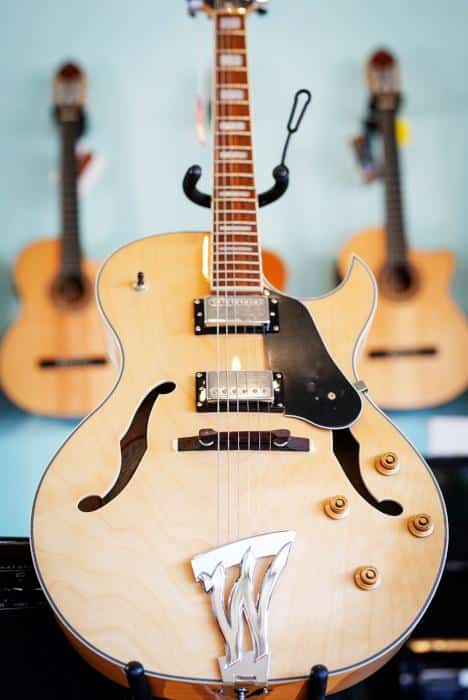What if I told you that one man’s unique approach to the art of *jazz guitar* could still transform how we understand and play the instrument today? As someone who has spent years analyzing influential guitarists, I believe Barney Kessel’s revolutionary techniques have left an indelible mark on both the genre and aspiring musicians worldwide. This article delves into the enduring legacy of Barney Kessel and offers a guide to achieving *jazz guitar mastery* inspired by his work. With each chord he struck, Kessel redefined what was possible on the guitar, creating a path that countless musicians continue to follow. Intrigued? Join me as we explore the exceptional life of *Barney Kessel*, from his early beginnings to the transformative techniques that set him apart. Whether you’re a lifelong fan or discovering him for the first time, understanding Kessel’s influence is essential for any serious guitar enthusiast. Let’s unravel the secrets behind his enduring appeal and unparalleled contribution to jazz.
Who was Barney Kessel?
Early Life and Musical Beginnings

What early experiences shaped Barney Kessel into one of jazz’s most iconic guitarists? Born in Muskogee, Oklahoma, Kessel was immersed in a rich tapestry of musical influences that laid the groundwork for his eventual prowess in jazz guitar. Growing up in the 1930s, he absorbed the sounds of big band jazz—a profound foundation for any musician of that era. However, it was his exposure to a variety of musical styles that uniquely set him apart, informing his diverse playing technique—a concept I explore in my workshops.
From a young age, Kessel displayed an insatiable curiosity for music, picking up a guitar at just 12 years old. He diligently listened to records and radio broadcasts, learning and emulating the greats of his time. The mentorship he received from local musicians honed his skills, enabling him to develop a personal style marked by intricate melodies and rhythmic boldness. This formative period of his life not only cultivated his distinctive approach but also positioned him alongside the most famous jazz guitarists of the 20th century. Understanding Kessel’s early journey provides invaluable insights into the underpinnings of his masterful jazz interpretations, setting the stage for his later achievements and innovations in the genre.
Career Highlights

Which milestone events in Kessel’s career marked him as a jazz guitar legend? As we delve into Barney Kessel’s career highlights, several pivotal moments demonstrate his indelible mark on the world of jazz. Kessel’s performances with The Oscar Peterson Trio and his influential role in Jazz at the Philharmonic are notable examples. *His dexterity on the guitar elevated the ensemble’s sound* and inspired countless musicians.
I vividly recall Kessel’s groundbreaking collaboration with Charlie Parker and Lester Young, among others, illustrating *how his ability to blend into various musical settings amplified the essence of jazz itself*. From contributing to Hollywood film scores to his solo recordings, *Kessel seamlessly merged traditional jazz guitar sounds with innovative techniques*, showcasing the breadth of his talent.
These accomplishments not only established Kessel as a key figure in Barney Kessel music history but also solidified his influence on future generations. As someone who values collaboration, I often reflect on how Kessel’s synergistic approach in music parallels the extraordinary outcomes I’ve witnessed in collaborative learning sessions.
What Made Barney Kessel Unique?
Signature Guitar Techniques

What improvisational techniques transformed the way jazz guitarists approach their craft? Delving into the rhythmic brilliance of Barney Kessel reveals a multitude of signature guitar techniques that reshaped jazz guitar. Kessel’s innovative use of chords and inversions demonstrated his mastery, pulling jazz away from its rigid foundations and into a more fluid, expressive domain. His ability to weave complex harmonies with effortless grace made him a pioneer in guitar improvisation.
Among Kessel’s most lauded contributions was his distinctive use of chord-melody arrangements, skillfully blending rhythm and lead into seamless, soulful phrases. This approach not only enriched the tonal textures of his performances but also expanded the expressive possibilities of the guitar. Kessel’s signature techniques can still be applied today—something I emphasize when teaching modern improvisation methods.
As we explore the lasting impact of these revolutionary techniques, it becomes clear how Kessel’s creative genius eternally influences aspiring jazz guitarists. Understanding his unique approach starts with appreciating his impeccable timing and nuanced articulation, elements that define his legacy and continue to inspire new generations.
Instruments Played

Instruments carry the essence of a musician’s voice, and in the case of Barney Kessel, his choice of guitars was pivotal in shaping his distinctive sound. *How did the specific guitars played by Kessel shape his unique sound in jazz?* The answer lies in his preference for certain instruments like the Gibson ES-350. Kessel’s hands crafted sonorous melodies and intricate chords that breathed new life into jazz guitar, enhanced by the very guitars he chose with meticulous precision.
Drawing from my own experiences in articulating the relationship between musicians and their gear, I understand the profound impact these choices have. In my extensive writings on guitar gear, I’ve highlighted how Kessel’s instruments were not mere tools but an extension of his artistry. The distinctive warmth and clarity of the *Barney Kessel guitar gear* melded with his innovative techniques, marking him as an ineffable icon in jazz.
Kessel’s exceptional ability to extract a rich, resonant tone from his guitars elevated every piece he performed, offering a unique narrative that resonated across the industry. This understanding of how instrument choice can transform music appreciation guides the next sections as we delve further into his influential legacy. From his signature techniques to his indelible impact on modern guitarists, each transition echoes Kessel’s enduring influence in jazz music.
Why is Barney Kessel Important?
Impact on Jazz Guitar

Understanding Kessel’s influence is crucial for any aspiring jazz guitarist looking to carve their path in this genre. Barney Kessel’s masterful amalgamation of rhythm and solo guitar reshaped the jazz guitar landscape, a paradigm that countless famous jazz guitarists model today. What long-lasting impacts did Kessel have on future generations of jazz guitarists? Kessel pioneered a unique blend of technical prowess and emotional depth, a combination that set a groundbreaking standard for jazz guitar performance. His melodic improvisation and innovative chordal work paved the way for modern jazz guitarists, inspiring them to explore new harmonies and techniques. Witnessing Kessel’s blend of blues, swing, and bebop was like watching a painter with an infinite palette. It’s a living legacy that challenges and stimulates guitarists of all levels. Barney Kessel’s influence stretches far beyond his era, forever engraining his soul-stirring artistry and technical brilliance into the annals of jazz history, providing enduring inspiration for future generations.
Modern Guitarists Inspired by Kessel

Which contemporary artists continue to channel Kessel’s legacy in their music today? As I observe, many modern guitarists cite Kessel as a primary inspiration, showcasing the timeless nature of his work. Barney Kessel’s innovative approach to jazz guitar, characterized by his remarkable technique and soulful improvisation, continues to ripple through the music of today. Guitarists like Julian Lage, John Pizzarelli, and Gilad Hekselman have frequently acknowledged Kessel’s influence in their work, often paying tribute through their renditions and interpretations. These artists not only learn jazz guitar by studying Kessel’s recordings but also apply his stylistic nuances in their original compositions, infusing modern jazz with the classic touch Kessel was known for.
Incorporating Kessel’s methods into contemporary jazz highlights his lasting impact and solidifies his crucial role in shaping the genre. His ability to blend technical proficiency with emotional depth created a blueprint that modern musicians eagerly follow, ensuring his legacy remains vibrant and relevant in the jazz world today.
How to Emulate Kessel’s Style
Learning Key Techniques

As a jazz guitarist aiming to capture Barney Kessel’s unique essence, you might wonder, what are the foundational techniques that can replicate Kessel’s distinctive jazz sound? The answer lies in a meticulous study of the guitar techniques he employed, particularly his adept use of chords and inversions. In my teaching, I break down these complex techniques into digestible steps, much like the approach Kessel took in imparting his knowledge.
To start, focus on understanding Kessel’s use of the guitar fretboard. His signature style was characterized by fluid transitions between intricate chord inversions, which created rich, full-bodied harmonies. By mastering these elements, you can begin to mirror his sound. Dive deep into his recordings, isolate sections, and practice them slowly. This detailed, step-by-step approach ensures that each aspect of Kessel’s technique becomes second nature. Once you’re comfortable, integrate these skills into your improvisation, gradually building up speed and complexity.
Taking these techniques to heart will not only enhance your ability to emulate Kessel’s style but also deepen your overall jazz guitar proficiency. With dedication and the right guidance, replicating his signature sound becomes an achievable goal, adding immense value to your musical journey.
Practice Exercises and Tips

As we delve deeper into *How to Emulate Kessel’s Style*, we arrive at a critical juncture that bridges theory with practice. What actionable exercises can help you effectively integrate Kessel’s techniques into your practice routine? This question not only ignites curiosity but serves as the gateway to transforming your jazz guitar journey. Practicing with *intention and structure* greatly accelerates skill development—an approach I share in my instructional content.
To learn jazz guitar with the depth Kessel exhibited, it’s essential to focus on targeted exercises that enhance *guitar improvisation* skills. For instance, dissecting Kessel’s solos and reconstructing them in various keys builds both technical proficiency and creative expression. Emulating his use of chord-based motifs can significantly refine your harmonic vocabulary. Implementing a routine that includes scale explorations synchronized with Kessel’s unique phrasing can *powerfully enrich* your improvisational prowess.
Emphasizing these exercises within your practice not only brings you closer to Kessel’s artistry but also fosters a *richer, more versatile* guitar technique. As you progress, remember that the ultimate goal is not mere mimicry but developing your unique voice *inspired by one of jazz’s greatest masters*. Transitioning into the next section, we’ll answer some common questions that often arise when delving into Kessel’s world of jazz guitar mastery.
FAQs
Who was Barney Kessel?
What is Barney Kessel’s impact on jazz guitar?
What are some recommended Barney Kessel recordings?
How can I learn jazz guitar techniques like Barney Kessel?
Where can I find resources on Barney Kessel’s life and legacy?
Conclusion
How does Barney Kessel’s legacy continue to resonate within the jazz guitar community even today? His enduring influence is rooted in his ability to merge emotion with technical brilliance, leaving a lasting imprint on both the music itself and the countless guitarists he has inspired. In exploring Kessel’s profound contribution, I am consistently struck by the way his music *transcends time*. His innovative approaches to harmonics and rhythm, as well as his pioneering use of chord melodies, have set a benchmark in guitar mastery.
Kessel’s profound impact is multifaceted. Through his career, he collaborated with *iconic jazz luminaries*, pushing the boundaries of jazz guitar. His uniqueness lay not just in technique but in transforming the instrument into a voice of emotional resonance. Understanding and emulating his style offers modern guitarists a gateway to evolving their own expressive capabilities. I believe every guitarist should delve into Kessel’s contributions; doing so not only enriches their musical journey but ensures his legacy continues to thrive in contemporary jazz.

